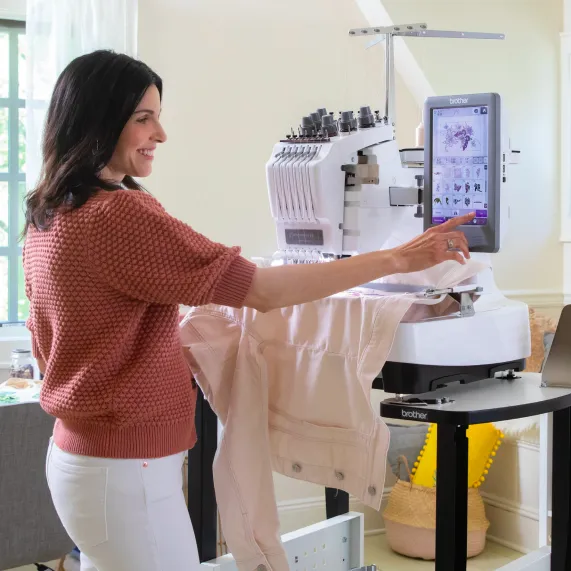
Introduction
Embroidery has been a beloved craft for centuries, but the digital age has transformed it into something even more extraordinary. Enter embroidery digitizing—the fascinating intersection of art and technology where stitches are no longer just hand-sewn but carefully programmed. This evolution has opened doors for designers, small businesses, and hobbyists to create intricate, precise, and scalable embroidered designs like never before.
In this article, we’ll explore:
-
The history and evolution of embroidery digitizing
-
How technology has enhanced traditional techniques
-
The industries benefiting most from digitized embroidery
-
The future of this craft-meets-code revolution
Whether you’re a seasoned embroiderer or just curious about the process, this guide will show you why digitizing is changing the game.
From Hand-Stitching to Digital Precision
A Brief History of Embroidery
Embroidery dates back thousands of years, with early examples found in ancient Egypt and China. Traditionally, it was a painstaking handcraft—each stitch placed deliberately by skilled artisans. Fast forward to the 1980s, when computerized embroidery machines emerged, and the craft took a technological leap.
The Birth of Digitizing
Digitizing software allowed designs to be converted into machine-readable files, automating the stitching process. What once took hours by hand could now be replicated perfectly in minutes. But early digitizing was clunky—limited in detail and often requiring manual adjustments.
Today, advanced software and AI have refined the process, making it possible to:
-
Convert complex artwork into flawless stitches
-
Simulate designs before stitching
-
Adjust for different fabrics automatically
How Digitizing Works: The Tech Behind the Thread
The Digitizing Process Step-by-Step
-
Design Input – Artwork (like a logo or illustration) is uploaded into digitizing software.
-
Stitch Mapping – The software (or a human digitizer) assigns stitch types (satin, fill, running).
-
Path Planning – The machine’s stitching sequence is optimized for efficiency.
-
Testing & Refinement – A sample is stitched to check for errors.
-
Final File Export – The design is saved in machine-compatible formats (DST, PES, EXP).
Key Technologies Powering Modern Digitizing
-
AI-Assisted Design – Predicts optimal stitch paths and density.
-
3D Simulation – Previews how stitches will look on fabric.
-
Automated Adjustments – Adapts designs for different materials.
Who’s Using Digitized Embroidery?
1. Fashion & Apparel
-
High-end designers use digitizing for intricate textures and embellishments.
-
Fast fashion brands replicate hand-embroidered looks at scale.
2. Corporate Branding
-
Uniforms, hats, and promotional items feature crisp, durable logos.
-
Security stitching prevents counterfeit merchandise.
3. Home Decor & Art
-
Digitized embroidery adds texture to wall hangings and pillows.
-
Artists blend traditional and digital techniques for mixed-media pieces.
4. Small Businesses & Makers
-
Etsy sellers create custom patches and personalized gifts.
-
DIY enthusiasts experiment without needing advanced sewing skills.
The Benefits of Digitized Embroidery
Precision & Consistency
-
Every stitch is identical, even across hundreds of items.
-
Complex designs retain clarity at small sizes.
Speed & Scalability
-
Mass production becomes feasible without sacrificing quality.
-
Reorders are seamless with saved digital files.
Creative Freedom
-
Photorealistic designs, 3D effects, and mixed-media embroidery.
-
Easy experimentation with colors, textures, and stitch types.
Challenges & Considerations
Learning Curve
-
Mastering digitizing software takes time (or requires hiring an expert).
-
Not all designs translate well to stitches—simplification is often needed.
Cost of Entry
-
Professional-grade software can be expensive.
-
Industrial embroidery machines require significant investment.
Balancing Tech & Craft
-
Some argue digitizing loses the “handmade” charm.
-
The best results still require human artistry in the digitizing process.
The Future of Embroidery Digitizing
AI & Automation
-
Smarter software that requires less manual input.
-
Instant design adjustments based on fabric type.
Sustainable Innovations
-
Reduced thread waste through optimized stitch paths.
-
Biodegradable and recycled thread options.
Interactive Embroidery
-
Conductive thread for wearable tech.
-
Augmented reality-enhanced designs.
Conclusion
Embroidery digitizing is more than just a technological upgrade—it’s a new chapter in a centuries-old craft. By merging the precision of code with the artistry of stitching, digitizing has made embroidery more accessible, scalable, and innovative than ever before.
For businesses, it means branding that stands out. For artists, it unlocks new creative possibilities. And for hobbyists, it offers a bridge between traditional skills and modern tools.
As technology continues to evolve, one thing remains certain: the marriage of craft and code is here to stay, and the future of embroidery has never looked brighter.